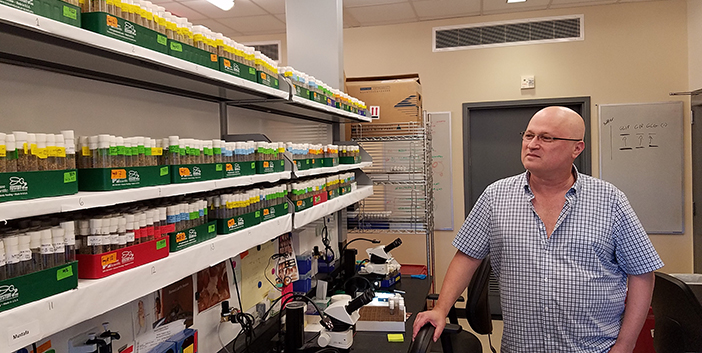With new technology scientists can trace, and maybe someday control, neural circuits.
Finding out which neurons are connected with which others, and how they act together, is a huge challenge in neuroscience, and it’s crucial for understanding how brain circuits give rise to perception, motion, memory, and behavior.
A new Brown University-developed technology called trans-Tango allows scientists to exploit the connections between pairs of neurons to make such discoveries in neuroscience. In a new study in Neuron, they used trans-Tango to illuminate connected neurons in fruit flies, revealing previously unmapped gustatory circuits that link the taste-sensing organs to brain regions known to govern feeding behavior and memory.
The technology is widely applicable, the researchers say, because trans-Tango doesn’t depend on the neurotransmitters involved in a neural connection or on the types of neurons that are connected. As long as two neurons join at a synapse, trans-Tango allows scientists to label the cells connected to a starter neuron, experiments in the paper show.
Moreover, because trans-Tango works by instigating the expression of genes in connected pairs of neurons, it also has the potential to enable scientists to control circuit functions, says senior and corresponding author Gilad Barnea, PhD, an associate professor of neuroscience who began looking for a precise, reliable, and general way to visualize neural connections two decades ago. The application of trans-Tango that his team demonstrates in the new study is circuit tracing, but manipulations such as activating or shutting off connected neurons could become possible, too.
“trans-Tango provides genetic accessibility in the context of connectivity,” Barnea says. “Our technique allows you to access the neurons that interact with the particular ‘starter’ cell you target. It therefore expands the use of molecular genetic techniques beyond the cell for which you have a marker to the ones it ‘talks’ to.”
The team, which includes postdoctoral fellows, graduate students, research assistants, and undergraduates, is now working on developing a host of other applications of trans-Tango. These include using the system to manipulate behavior, developing the equivalent technique in mice, and making it work in reverse so that it employs incoming connections from other neurons just like it does outgoing connections. That’s according to co-lead authors Mustafa Talay PhD’16, a postdoctoral fellow, and Ethan Richman ’13, now a graduate student at Stanford.
In addition, the Barnea lab is collaborating on adapting the technology to study how cancer spreads.
Continue reading here. Watch a video about trans-Tango here.




